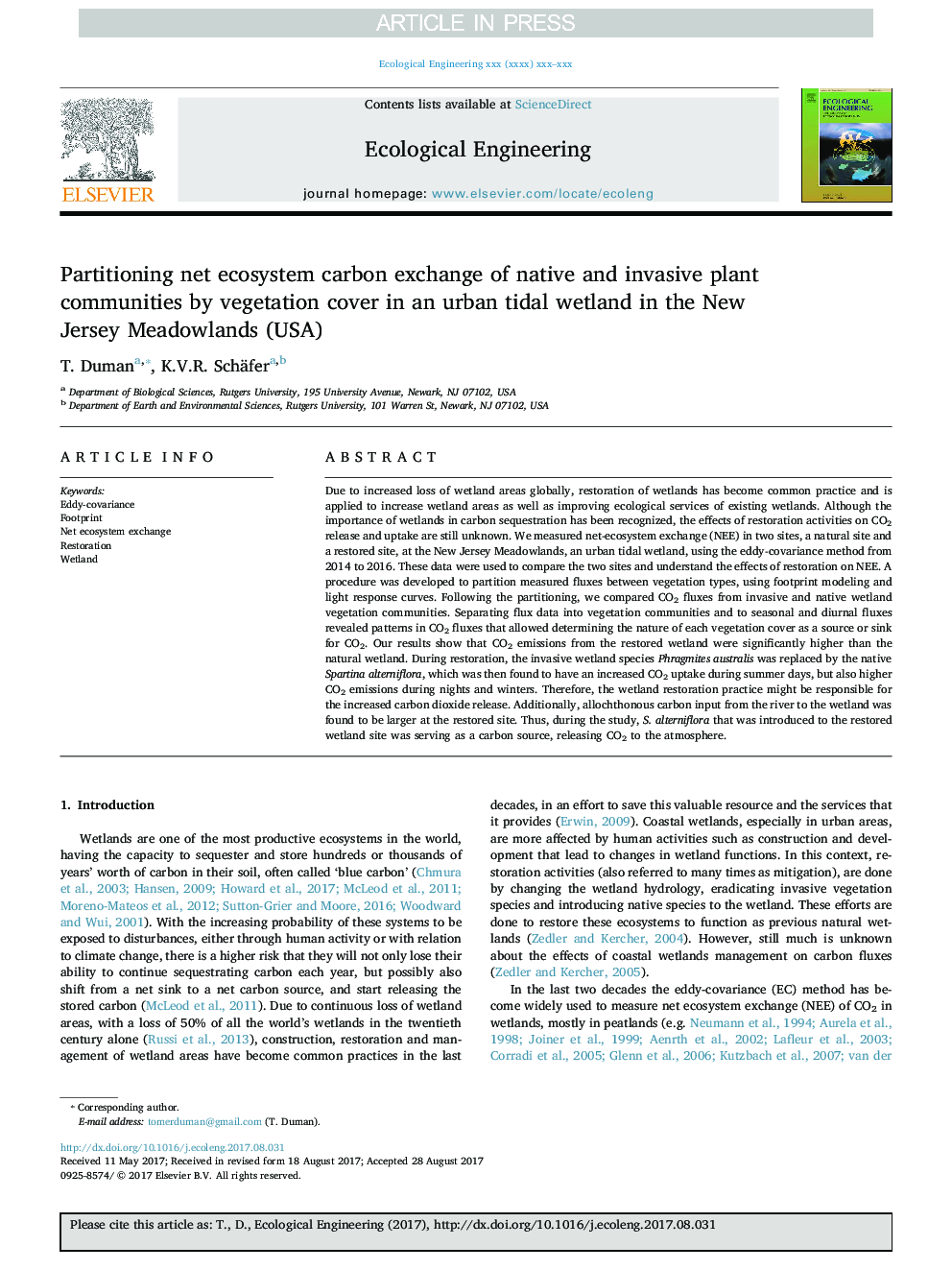| کد مقاله | کد نشریه | سال انتشار | مقاله انگلیسی | نسخه تمام متن |
|---|---|---|---|---|
| 8847974 | 1617988 | 2018 | 9 صفحه PDF | دانلود رایگان |
عنوان انگلیسی مقاله ISI
Partitioning net ecosystem carbon exchange of native and invasive plant communities by vegetation cover in an urban tidal wetland in the New Jersey Meadowlands (USA)
دانلود مقاله + سفارش ترجمه
دانلود مقاله ISI انگلیسی
رایگان برای ایرانیان
کلمات کلیدی
موضوعات مرتبط
علوم زیستی و بیوفناوری
علوم کشاورزی و بیولوژیک
بوم شناسی، تکامل، رفتار و سامانه شناسی
پیش نمایش صفحه اول مقاله

چکیده انگلیسی
Due to increased loss of wetland areas globally, restoration of wetlands has become common practice and is applied to increase wetland areas as well as improving ecological services of existing wetlands. Although the importance of wetlands in carbon sequestration has been recognized, the effects of restoration activities on CO2 release and uptake are still unknown. We measured net-ecosystem exchange (NEE) in two sites, a natural site and a restored site, at the New Jersey Meadowlands, an urban tidal wetland, using the eddy-covariance method from 2014 to 2016. These data were used to compare the two sites and understand the effects of restoration on NEE. A procedure was developed to partition measured fluxes between vegetation types, using footprint modeling and light response curves. Following the partitioning, we compared CO2 fluxes from invasive and native wetland vegetation communities. Separating flux data into vegetation communities and to seasonal and diurnal fluxes revealed patterns in CO2 fluxes that allowed determining the nature of each vegetation cover as a source or sink for CO2. Our results show that CO2 emissions from the restored wetland were significantly higher than the natural wetland. During restoration, the invasive wetland species Phragmites australis was replaced by the native Spartina alterniflora, which was then found to have an increased CO2 uptake during summer days, but also higher CO2 emissions during nights and winters. Therefore, the wetland restoration practice might be responsible for the increased carbon dioxide release. Additionally, allochthonous carbon input from the river to the wetland was found to be larger at the restored site. Thus, during the study, S. alterniflora that was introduced to the restored wetland site was serving as a carbon source, releasing CO2 to the atmosphere.
ناشر
Database: Elsevier - ScienceDirect (ساینس دایرکت)
Journal: Ecological Engineering - Volume 114, 15 April 2018, Pages 16-24
Journal: Ecological Engineering - Volume 114, 15 April 2018, Pages 16-24
نویسندگان
T. Duman, K.V.R. Schäfer,